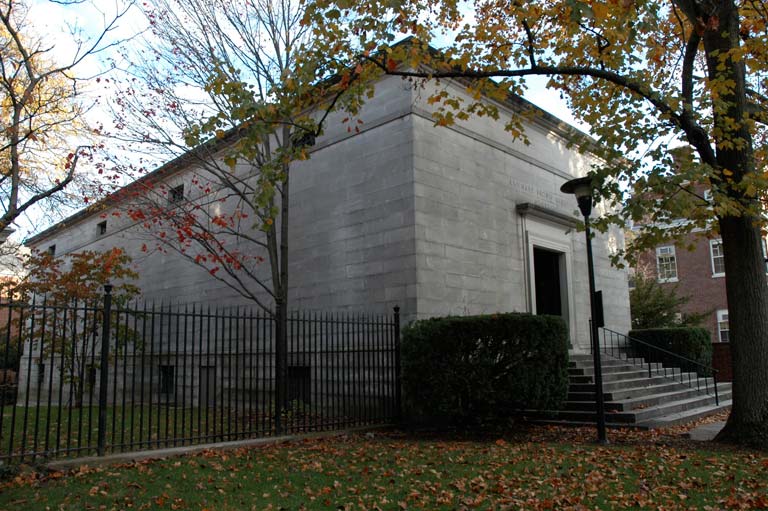
The Annmary Brown Memorial houses exhibits of European and American paintings from the 17th through the 20th centuries, the Cyril and Harriet Mazansky British Sword Collection, as well as personal mementos of its founder, General Rush C. Hawkins, and the Brown family. The Memorial was independent until 1948, when the building and its holdings were transferred to Brown University. The book and manuscript collections, assembled by General Hawkins and formerly housed in the Memorial, were moved to the John Hay Library in 1990.
The Annmary Brown Memorial, designed by Rhode Island architect Norman Isham, was built between 1903 and 1907 as a library, art gallery, and mausoleum. Its monumental bronze doors feature allegorical representations of Art and Learning, signaling to visitors that the Memorial offers many treasures to explore, in addition to the crypt at the rear of the building that holds the remains of Annmary Brown and her husband, General Hawkins. The Memorial was independent until 1948, when the building and its holdings were transferred to Brown University.
Rush Hawkins was recognized by his contemporaries both as a distinguished book collector and a discriminating patron of the arts. He was appointed Assistant to the Commissioner General for the United States Commission at the 1889 Universal Exposition in Paris. As "Commissaire Expert des Beaux Arts," he was responsible for selecting and organizing all the works to be exhibited by American artists, some of whose work was later purchased for his private collection. He succeeded in alienating James McNeill Whistler, who withdrew his work from the American exhibition in protest. Their artistic feud was publicly conducted in the pages of the Paris edition of The New York Herald and later memorialized in Whistler's extended essay on The Gentle Art of Making Enemies (Chelsea, 1890).
Selections from the Hawkins collection of art works are on display in the Memorial's galleries. The collection shows the General's preference for strongly representational paintings. Among the early master works are paintings attributed to Anthony Van Dyck and his school, Angelika Kauffmann, Michelle Marieschi (a follower of Canaletto), Peter Paul Rubens, Andrea del Sarto, Francesco Solimena, Gilbert Stuart, Giovanni Battista Tiepolo and Benjamin West. The more modern examples include works by Giuseppi Barbaglia, Jacob D. Blondel, Don Jose Casado, Thomas Couture, Thomas Hicks, John Wesley Jarvis, Eastman Johnson, Frederik Kaemmerer, Gari Melchers and Edwin Lord Weeks.